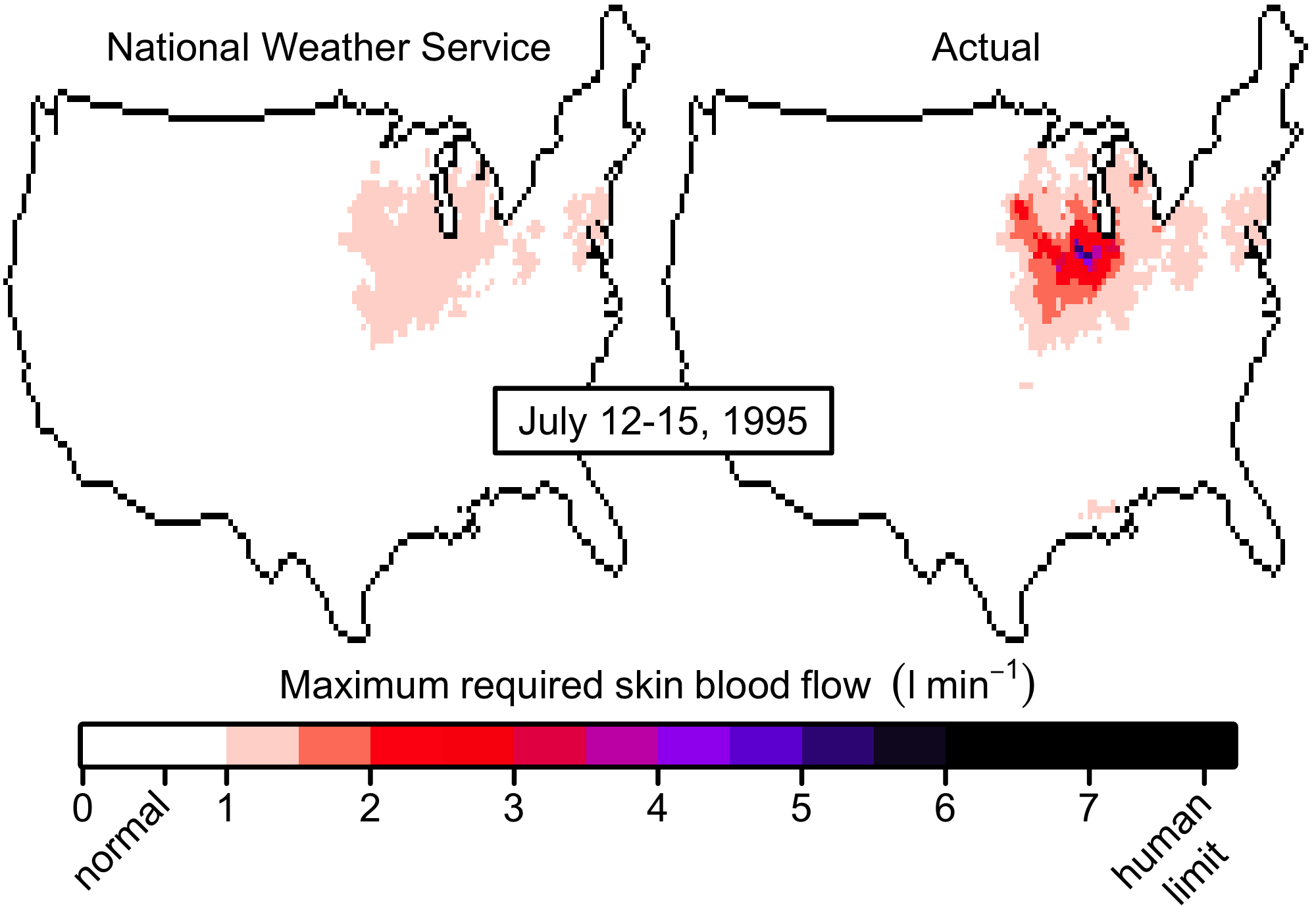Romps and Lu, Chronically underestimated: A reassessment of US heat waves using the extended heat index, ERL, 2022
Media coverage
NPR All Things Considered with Ari Shapiro
KALW Your Call with Rose Aguilar
Climate Break with Ethan Elkind
Paper
Print coverage
Description
The National Weather Service (NWS) reports the heat index in summertime, telling the public what the combination of temperature and humidity feels like. The heat index is supposed to be based on a model of human thermoregulation, introduced by Robert Steadman in his seminal 1979 paper. Unfortunately, that paper did not calculate the heat index out to high heat and humidity, so the NWS uses a polynomial fit to extrapolate the heat index out to very hot conditions. So how good is that extrapolation?
In a recent paper, we extended Steadman's heat index to all combinations of temperature and humidity, so now we can check how well the NWS approximation performs. Using the extended heat index to rank US heat waves from 1984 to 2020, we find that the top two heat waves occurred in the Midwest in July 2011 and July 1995. During those events, a person's cardiovascular system would have been taxed with a skin blood flow that was elevated severalfold, approaching the physiological limit. These effects are not captured by the National Weather Service's polynomial extrapolation, which systematically underestimates the heat index during severe heat waves by as much as 20 degrees Fahrenheit.

The maximum skin blood flow required to maintain a healthy core temperature during the July 1995 heat wave as calculated using the National Weather Service's approximation to the heat index (left) and the actual heat index (right). On the color bar, "normal" corresponds to 0.57 liters per minute, the resting value, and "human limit" corresponds to 7.8 liters per minute, the physiological limit estimated from laboratory experiments.